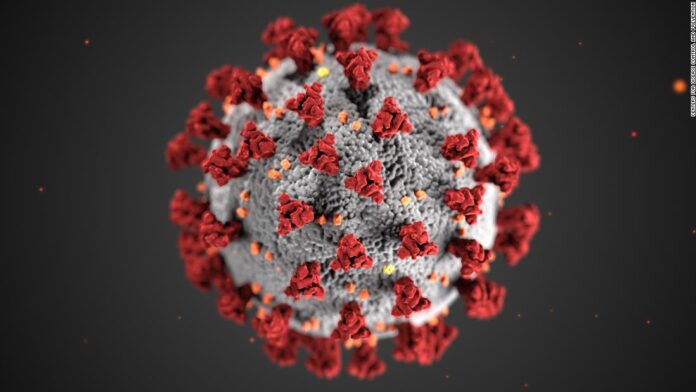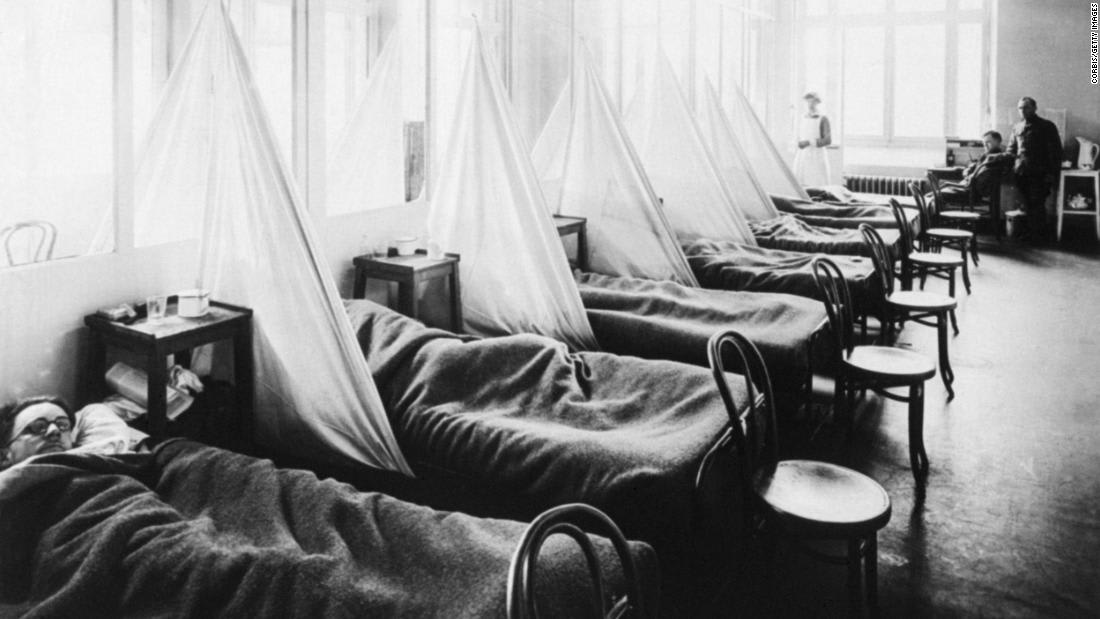Nearly half of US states are reporting increased numbers of new Covid-19 cases
From CNN’s Madeline Holcombe and Dakin Andone
Almost half of US states are reporting increased numbers of new Covid-19 cases as health experts warn of a potential coronavirus surge in the fall and winter.
According to the latest Johns Hopkins University data:
- 21 states are showing an upward trend in cases compared to the previous week
- 19 states are showing steady trends
- 10 states are showing downward trends
The US meanwhile could see an explosion of Covid-19 cases in the fall and winter as people exercise less caution and spend more time indoors, where there is a greater likelihood of transmission, according to Dr. Chris Murray, director of the University of Washington’s Institute for Health Metrics and Evaluation (IHME).
Murray says the IHME model shows a “huge surge” expected to take off in October “and accelerate in November and December.”
The IHME model indicates that the country is currently seeing about 765 daily deaths from Covid-19, but that number could jump to 3,000 daily deaths by late December.
Here’s a look at where cases are increasing across the country:
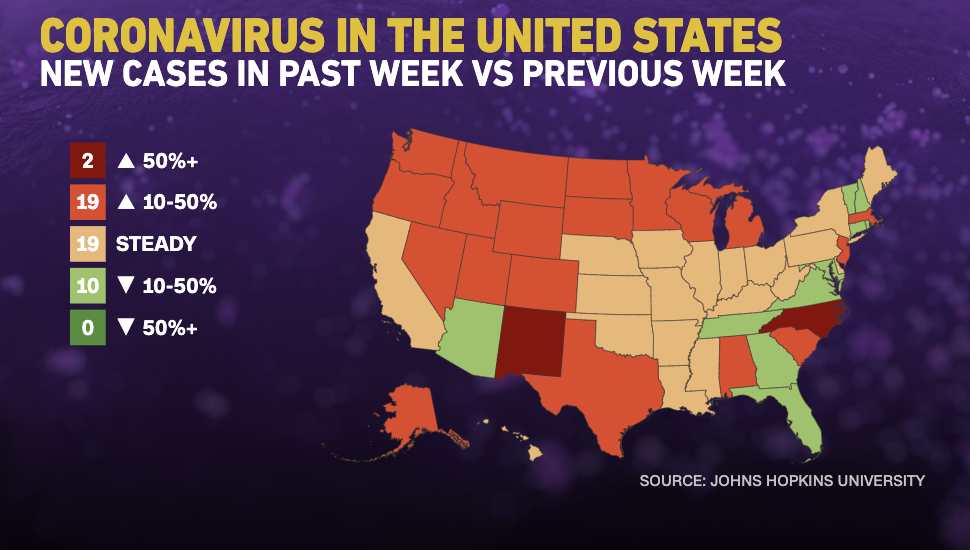
Pace University says 20 students, 18 of those in same dormitory, test positive for Covid-19
From CNN’s Anna Sturla
Twenty students have tested positive for Covid-19 at Pace University’s Westchester, New York campus, 18 of whom live in the same dormitory, according university spokesperson Marie Boster.
“While this news is obviously unwelcome, we were prepared for it, and have taken actions to protect our students and the community,” Pleasantville campus spokesperson Jerry McKinstry said in a press release.
Westchester County required all students to quarantine for two weeks who lived in or had recently left Alumni Hall, the release added.
Alumni Hall students still at the university are required to quarantine there, while those who have recently gone home are required to self-quarantine at home.
“We are continuing the rigorous disinfecting and cleaning of our facilities. Faculty will work to accommodate the remote learning needs of all Alumni Hall students,” McKinstry said.
Apart from those who have tested positive, their close contacts, or residents of the hall, Pleasantville campus students are continuing a mix of in-person and remote classes, Boster said.
Inovio’s planned Phase 2/3 Covid-19 vaccine trial on partial hold to answer FDA questions, company says
From CNN’s Jacqueline Howard
The biotechnology company Inovio’s planned Phase 2/3 coronavirus vaccine trial has been put on a partial hold, the company announced on Monday.
The announcement notes that the US Food and Drug Administration notified the company that it has additional questions about the company’s planned Phase 2/3 trial of the vaccine candidate INO-4800, including questions about the device to be used as part of delivering the vaccine in the trials.
Until the FDA’s questions have been “satisfactorily addressed,” the Phase 2/3 trial is on partial clinical hold, according to the company announcement.
“The company is actively working to address the FDA’s questions and plans to respond in October, after which the FDA will have up to 30 days to notify INOVIO of its decision as to whether the trial may proceed,” the announcement says.
“This partial clinical hold is not due to the occurrence of any adverse events related to INOVIO’s ongoing expanded Phase 1 study of INO-4800, the conduct of which may continue and is not impacted by the FDA’s notification,” the announcement says. “In addition, this partial clinical hold does not impact the advancement of INOVIO’s other product candidates in development.”
Some context: Inovio’s Covid-19 vaccine is being funded, in part, by the US Department of Defense, the Bill & Melinda Gates Foundation, and The Coalition for Epidemic Preparedness Innovations.
The company has not received funding from Operation Warp Speed, the Trump administration’s initiative to fast-track the development and delivery of a Covid-19 vaccine.
CDC director concerned Atlas is sharing misleading information with Trump
From CNN’s Nick Valencia and Jamie Gumbrecht
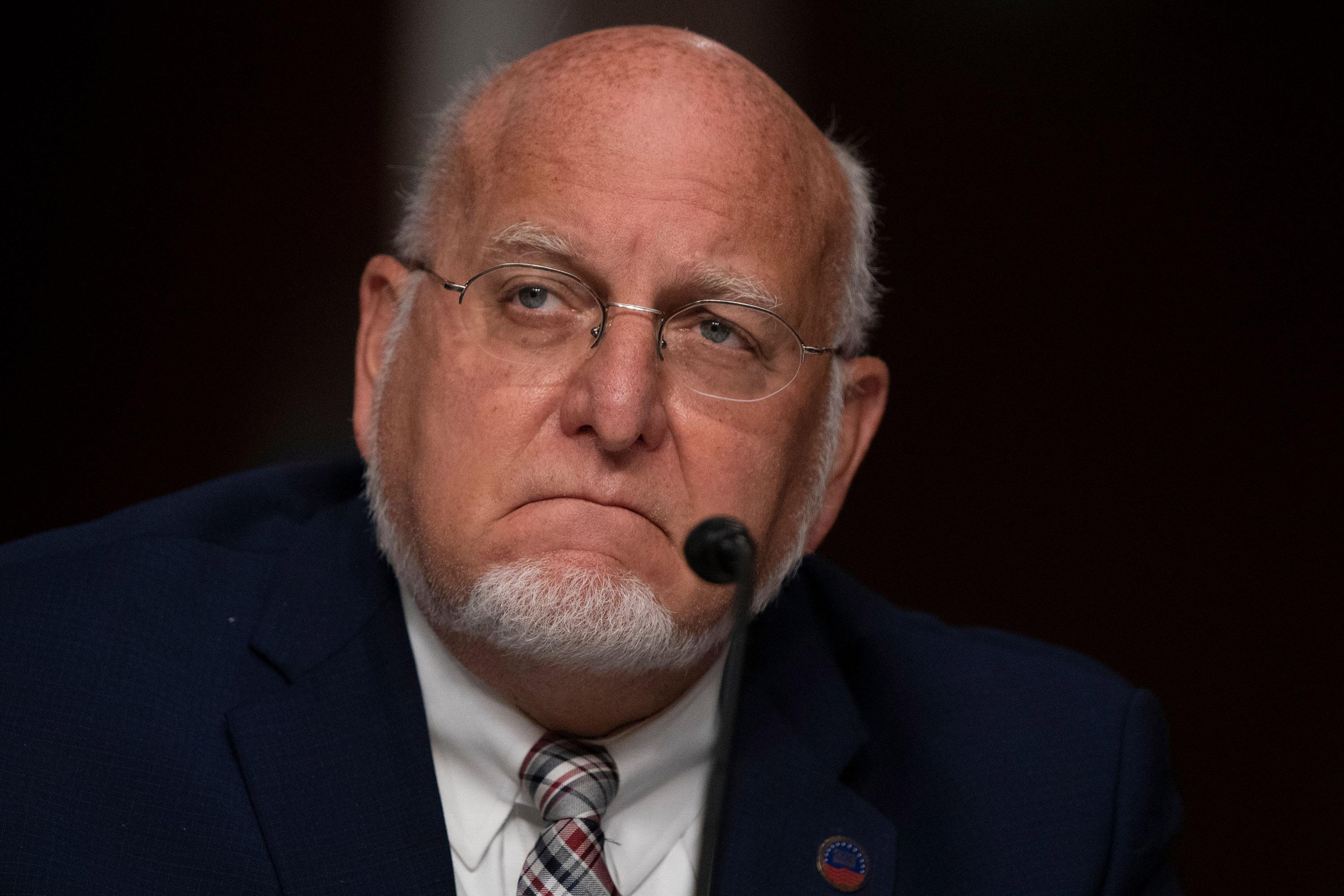
NBC News reported Monday that US Centers for Disease Control and Prevention Director Dr. Robert Redfield was overheard during a phone call in public on a commercial airline saying, “Everything he says is false.”
NBC News, which heard the comment, said Redfield acknowledged after the flight from Atlanta to Washington, DC, that he was speaking about Dr. Scott Atlas, a neuroradiologist who joined the White House Coronavirus Task Force in August.
NBC said that Redfield, in the conversation with a colleague on Friday, suggested Atlas is providing President Trump with misleading data about the efficacy of masks, young people’s susceptibility to the coronavirus and herd immunity.
In a statement to CNN, a CDC spokesman did not deny the conversation took place:
“NBC News is reporting one side of a private phone conversation by CDC Director Dr. Robert Redfield that was overheard on a plane from Atlanta Hartsfield airport. Dr. Redfield was having a private discussion regarding a number of points he has made publicly about Covid-19.”
A federal health official tells CNN, more broadly, “bottomline, the story is accurate.”
CNN has reached out to the White House for comment.
CNN has reported that Atlas – a critic of severe lockdowns who was supported herd immunity strategies against the coronavirus – has found himself at odds with other medical experts in his administration, including Dr. Anthony Fauci and Dr. Deborah Birx.
On Friday, Fauci said during an interview that the Trump administration has pivoted away from receiving daily guidance from the White House Coronavirus Task Force to focus more heavily on the economy. “We’re meeting now on an average of one and at the most two times a week,” Fauci said.
Governor warns New York City’s spike in cases shows Covid-19 still “a force to be reckoned with”
From CNN’s Madeline Holcombe

As cases spike in parts of New York City, Gov. Andrew Cuomo warned that Covid-19 “remains a force to be reckoned with throughout the country.”
“I urge New Yorkers to keep wearing masks, socially distancing and washing their hands, and local governments must continue to enforce state public health guidance,” Cuomo said in a statement. “By staying vigilant and smart, we can beat COVID together.”
Experts have cautioned the US could see an explosion of coronavirus cases in the fall and winter as people exercise less caution and spend more time indoors.
Already the US has reported more than 7.1 million cases and 204,756 deaths since the pandemic began, and 21 states are reporting more new cases in the last seven days compared with the week before, according to a CNN analysis of data from Johns Hopkins University.
Once the epicenter of the pandemic in the US, New York had boasted a test positivity rate — the percentage of tests being performed that come back positive for the virus — of less than 1% for more than a month. That rate broke 1% on Saturday as Cuomo reminded New Yorkers “we cannot drop our guard.”
Though the rate of positive tests is still low relative to other states, neighborhoods in Queens and Brooklyn are seeing cases “continue to grow at an alarming rate,” according to a news release from the city’s Department of Health.
But New York is still among the states with the lowest positivity rate in the US. The World Health Organization advised that the rates of positivity in testing should remain at 5% or lower for at least 14 days before businesses reopen. Currently, 22 states and the District of Columbia meet that recommendation, with Vermont holding the lowest rate at 0.53% positive.
Twenty-eight states and Puerto Rico have positivity rates higher than 5%. The territory has a 100% positivity rate. Among US states, the rate is highest, 24.64%, in South Dakota, according to Johns Hopkins University.
Read more here.
World nears 1 million deaths as new outbreaks emerge
From CNN’s Eliza Mackintosh in London
Nearly 1 million people across the world have died since the start of the coronavirus pandemic and new outbreaks are continuing to crop up.
The World Health Organization has warned that a doubling of that number is “certainly unimaginable, but it’s not impossible,” if countries don’t work together to suppress the virus’ spread.
In the United States, India and Brazil — which account for more than half of all global cases — the pandemic shows no sign of slowing down.
The US, which surpassed 7 million cases on Friday, could see an explosion in Covid-19 infections as fall and winter set in, health experts warn. India, which hit 6 million cases on Monday, isn’t far behind — the country has recorded 5 million infections in the past two months alone. And the pandemic continues to roil South America. Though Brazil is the region’s worst-affected nation, with more than 4.7 million infections, Argentina, Colombia and Peru are recording thousands of new cases daily.
Several countries in Europe are also seeing an increasing trend in case numbers, after lockdown policies were lifted over the summer, contributing to a new surge. Second waves are underway in the United Kingdom, Spain and France.
This appeared in the September 28 edition of CNN’s Coronavirus: Fact vs. Fiction newsletter. Sign up here to receive the need-to-know headlines every weekday.
Read the rest of the newsletter here:
Investigating how the weather affects pandemics
From CNN’s Lauren Kent
Numerous scientists have studied how the 1918 flu spread to become the deadliest pandemic in history and which interventions worked, research that is becoming increasingly relevant during the current coronavirus crisis.
But little research has been done on how environmental conditions affected the 1918 pandemic — until now.
The 1918 flu coincided with the final years of the World War I, and it’s been well documented that heavy rain and cold temperatures impacted many battles. Now, a new study reveals that the cold, rainy weather was part of a once-in-a-century climate anomaly that occurred from 1914 to 1919 and added to the severity of the 1918 pandemic.
“We knew before, of course, from photos and eyewitness testimonies that the battlefields of Europe were really muddy and rainy and soldiers died of all sorts of exposure, even drowning in the mud and the trenches sometimes. What is news is that in fact it was a six-year anomaly and not just one or two instances,” said lead researcher Alexander More, a research associate at Harvard University’s history department and an associate professor at the University of Maine’s Climate Change Institute.
A team of more than a dozen scientists collected and analyzed an Alpine ice core to reconstruct the environmental conditions of Europe during the World War I. The process involves using a laser that melts a tiny bit from the ice surface and analyzing the chemicals released from each layer of water vapor. It’s so precise they can pinpoint exact seasons from each layer of ice.
Researchers then compared that ice core data to historical records of deaths during that time period and records of precipitation and temperatures from each month.
The researchers discovered that lingering cold, wet weather during the winters of 1915, 1916 and 1918 was caused by abnormally high rushes of marine air from the North Atlantic. Deaths in Europe peaked three times during World War I and all the spikes occurred during or soon after heavy rain and cold weather, according to the study.
Read the full story:
Quarantine failure led to more than 18,000 infections and 700 deaths, inquiry hears
From CNN’s Meenketen Jha
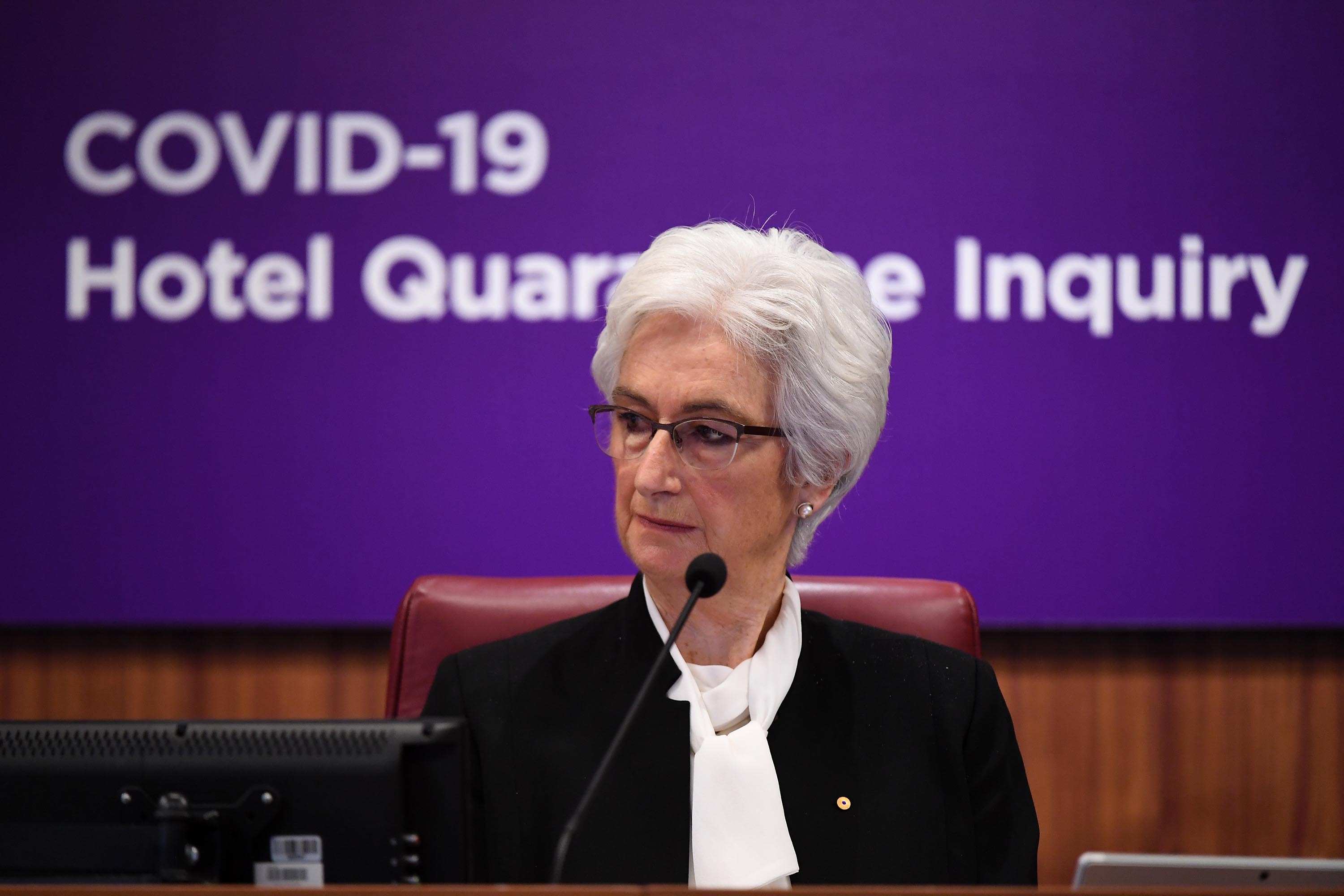
Failed quarantine measures in two hotels in the Australian state of Victoria lead to the deaths of 768 people and the infection of 18,418, according to closing submissions at the Covid-19 Hotel Quarantine Inquiry.
Ben Ihle, counsel, assisting at the Victorian inquiry, said that the hotel quarantine became a “seeding ground” for the virus, as authorities linked the massive Covid-19 outbreak in Victoria to the hotel cluster using genomic sequencing.
The failure by the hotel quarantine program to contain the virus is responsible for the deaths of 768 and infection of some 18,418 others. One only needs to pause and reflect on those figures to appreciate the full scope of the devastation and despair. This was a program that failed to meet its primary objective — to keep people safe from the virus,” Ilhe said Monday.
“On the 23rd May, Victoria’s Covid-19 death toll was 19. As of today, the total number of Covid related deaths in Victoria is 787,” Ilhe added.
The number of cases in the state has risen exponentially from June to the present day. “As of 15th June, Victoria had record 1,732 confirmed cases of Covid-19. As of today, that number 20,150,” Ilhe said.
The movement of the virus from the hotel cluster to the rest of the state was responsible for 99% of infections in the state, added Ilhe.
Some countries are eying Sweden’s “light-touch” Covid-19 response. It’s a gamble that could backfire
Analysis by CNN’s Angela Dewan in London
An expert on the spread of Covid-19 proclaimed last week that the pandemic in Sweden was essentially over — the virus there was “running out of steam,” he said, as researchers suggest Swedes could be building immunity.
Such comments have emboldened governments flirting with the idea of adopting Sweden’s “light-touch” approach, in the hope they can soften the blow to their economies.
There was reason for optimism when Kim Sneppen, from the Niels Bohr Institute in Copenhagen, made his comments. Sweden’s infection and death rates had been low for weeks, despite a second wave rolling over Europe. It seemed to mark a turnaround for the country, which experienced one of the highest death tolls in the world per capita during the spring.
The problem is, the science isn’t in on whether immunity is building in Sweden at all, after the country resisted lockdowns and let the virus spread through much of its population.
UK Prime Minister Boris Johnson, nonetheless, announced changes to restrictions in England last week, shaping the country’s Covid-19 response in the image of Sweden’s. Experts in both the UK and Sweden are warning that doing so could be dangerous.
Read the full story:



